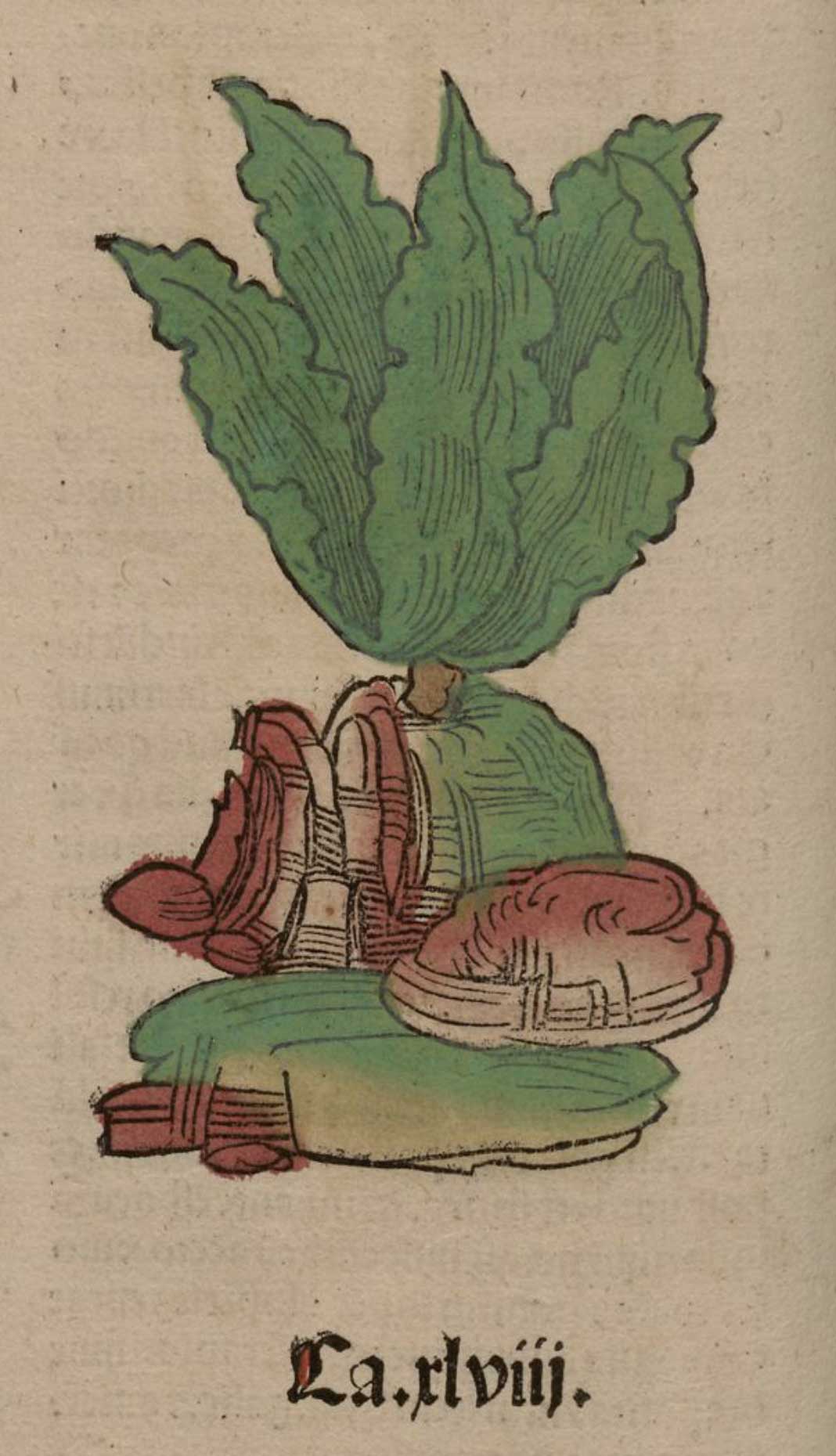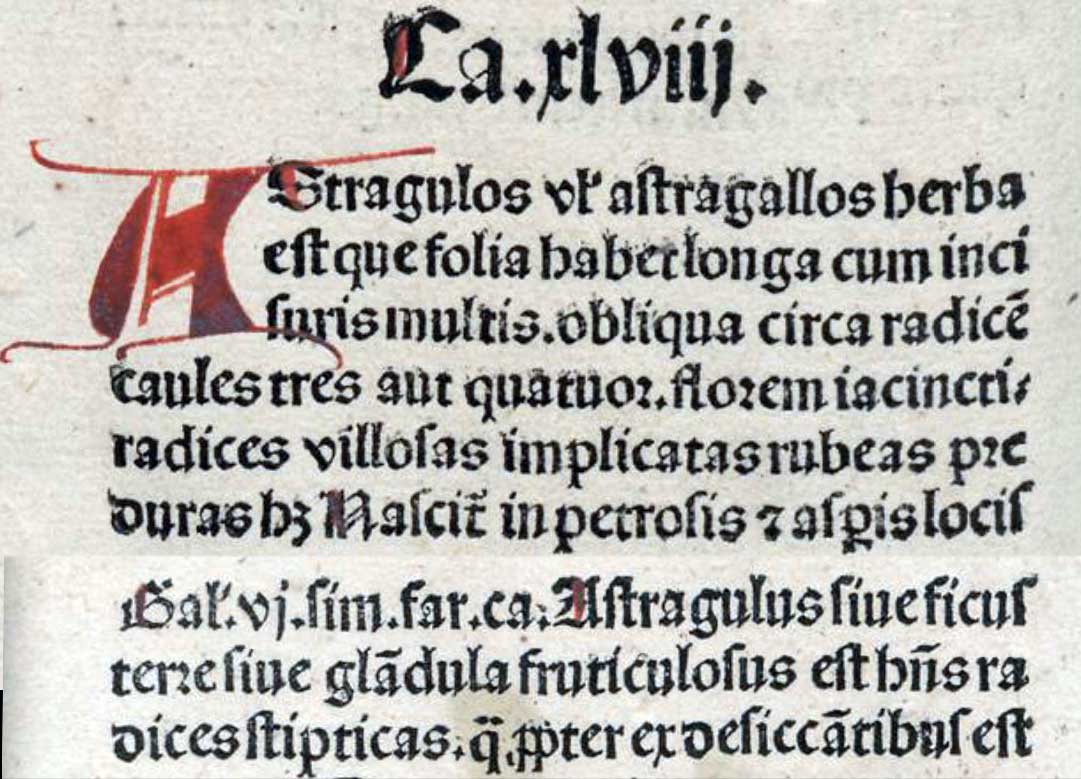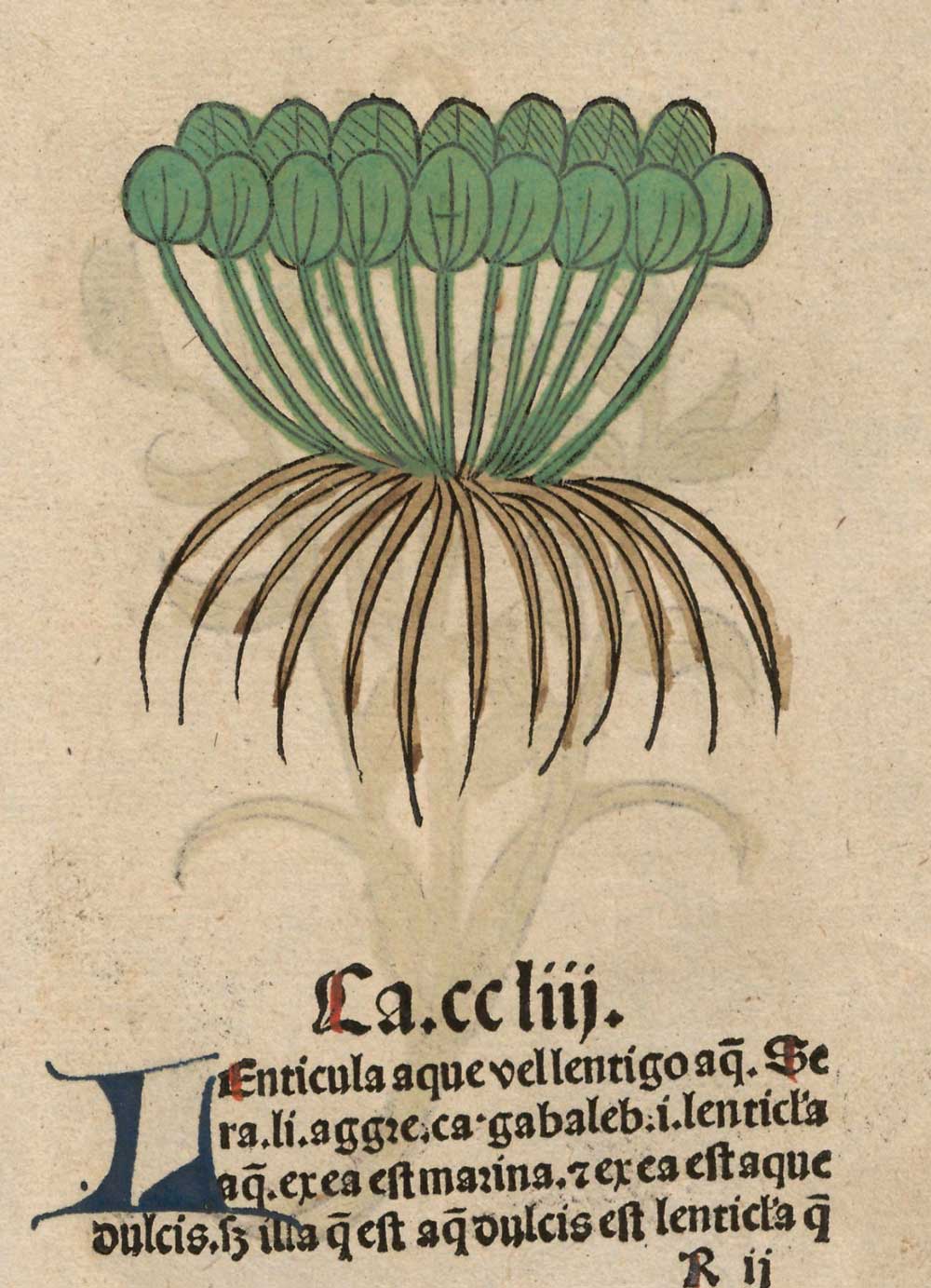hatchet fitch to lentils,
Original French: Securidaca aux Lentilles:
Modern French: Securidaca aux Lentilles:
Among the examples of pairings whose antipathies are not as vehement as the hatred thieves have of a certain usage of Pantagruelion.
The section from “La presle aux fauscheurs” (horse-tail to mowers) to “le Lierre aux Murailles” (ivy to walls), including this phrase, was added in the 1552 edition.
Notes
Astragulos
Astragulos
Lenticula
axe-weed
But no kind can change altogether into another, except one-seeded wheat and rice-wheat, as we said in our previous discussions, and darnel which comes from degenerate wheat and barley: at least, if this is not the true account, darnel loves chiefly to appear among wheat, as does the Pontic melampyros and the seed of purse-tassels, even as other seeds appear in other crops; thus aigilops seems to grow for choice among barley, and among lentils the rough hard kind of arakos, while among tares occurs the axe-weed,1 which resembles an axe-head in appearance.
Note 1. Plin. 18. 155; 27. 121; Diosc. 3. 130; Hesych. s.v. βέλλεκυς.
Securidaca to lentils
Est herba quae cicer enecat et ervum circum-ligando se, vocatur orobanche; tritico simili modo aera, hordeo festuca quae vocatur aegilops, lenti herba securiclata quam Graeci a similitudine pelecinum vocant; et hae conplexu necant.
There is a weed that kills off chick-pea and bitter vetch by binding itself round them, called orobanche; and in a similar way wheat is attacked by darnel, barley by a long-stalked plant called aegilops and lentils by an axe-leaved plant [‘Aegilops’ is Aegilops ovata; axle-grass is axe-weed (Securigera coronilla), or perhaps climbing persicaria or a bindweed; but axe-leaved is vague] which the Greeks call axe-grass from its resemblance; these also kill the plants by twining round them.
Securidaque
Securidaque: The pulse Axseed, Axwort, Axfitch, Hatchet-fitch.
securidaca
La fève-de-loup, qui étouffe les lentilles.
Securidaca (pelecinon) to Lentils
Pliny xviii. 17, § 44 (155)
securidaca
«Lentem [enecat] herba securidaca quam Græci a similitudine pelecinon vocant», dit Pline, XVIII, 44. Théophraste dit au contraire qu’elle nuit à l’aphaca: «In aphacis autem securina securi similis». (H.P., VIII, 8.) Securidaca, de Securis, hache, allusion à l’aspect de la gousse recourbée en forme de hache à deux tranchants. On y a voulu reconnaître Astragalus hamosus, L. (Securidaca minor de Rauwolf), et Securigera coronilla, D.C. Fée penche pour Biserrula pelecinus, L. (Paul Delaunay)
orobanche, aegilops, securidaca, antranium, l’yvraye
Les cinq exemples suivants sont tous empruntés au même chapitre de Pline (XVIII, 44) (LD).
lentil
lentil. [adopted from French lentille: -popular Latin *lenticula (= classical Latin lenticula), diminutive of lent-: see lens. The other Romantic forms represent the classical Latin word with unchanged quantity: Spanish lenteja, Portugese lentilha, Italian lenticchia.]
The seed of a leguminous plant (Ervum lens, Lens esculenta); also the plant itself, cultivated for food in European countries.
C. 1250 Genesis and Exodus
1488 Iacob An time him seð a mete Ðat man callen lentil 3ete.
C. 1425 Voc. in Thomas Wright and Richard Paul Wülcker, Anglo-Saxon and Old English Vocabularies (1884) 664/25 Hec lens, lentylle.
1548 William Turner The names of herbes in Greke, Latin, Englische, Duche, and Frenche 47 Lentilles are sowen in corne fieldes and growe as Tares do.
1577 Harrison England ii. vi. (1877) i. 153 Horssecorne, I meane, beanes, otes, tares and lintels [etc.].
1611 Bible, 2 Samuel. xxiii. 11 A piece of ground full of lentiles.
1688 R. Holme Armoury iii. 331/1 The dreggs of Chaff, and the small Seeds of Tares & Lintels which are in it.


